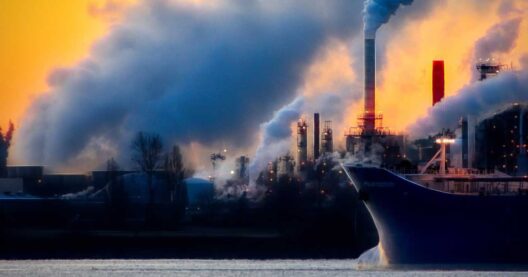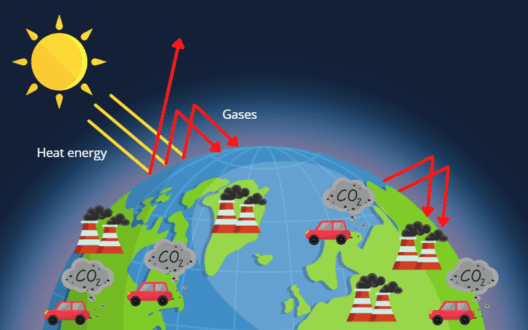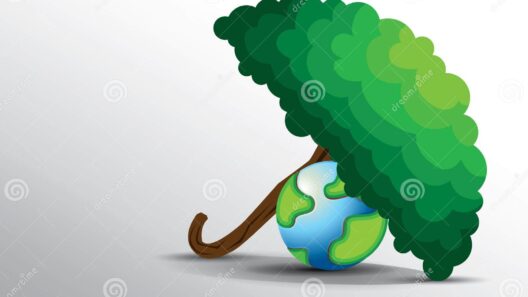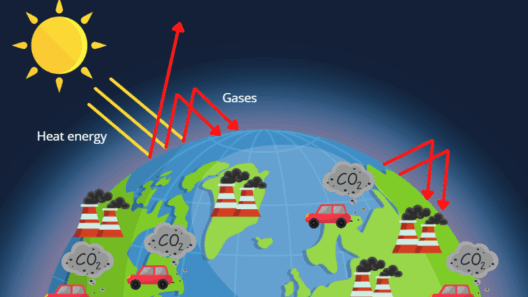The influence of plastic production on climate change is a complex topic that raises many questions. What if the very materials we rely on for convenience are the culprits behind our environmental distress? This inquiry leads us to critically examine the intricate relationship between plastic production and the escalating climate crisis.
First, it is pertinent to grasp the scale of plastic manufacturing. The process begins with the extraction of fossil fuels—primarily oil and natural gas. In the United States alone, it is estimated that the plastic industry will contribute a staggering 1.34 gigatons of greenhouse gas emissions annually by 2030 if current trends continue. This figure is akin to the emissions generated by over 295 new 500-megawatt coal-fired power plants. Quite formidable, isn’t it?
The initial stage of plastic production, petrochemical extraction, is marked by significant energy consumption and atmospheric emissions. The extraction process often involves hydraulic fracturing, or “fracking,” which not only releases methane, a potent greenhouse gas, but also poses risks of groundwater contamination. Furthermore, the refining process necessitates the burning of fossil fuels, emitting carbon dioxide and other pollutants. In summary, the inception of the plastic lifecycle is already steeped in environmental detriment.
Moving beyond extraction, the refining and conversion of raw materials into plastic dramatically exacerbates air pollution. Chemical reactions involved in transforming ethylene and propylene into polymers are energy-intensive. The resulting emissions contribute to global warming and have been identified as a notable point source of emissions within the chemical manufacturing industry. It is enough to make any eco-conscious individual ponder: Can society afford to entertain the plastic paradigm for much longer?
In addition to the climate impact, the toxic byproducts generated during plastic production are alarming. These materials not only jeopardize air quality but also pollute surrounding ecosystems, leading to dire consequences for both human and animal health. The cacophony of harmful effects diminishes biodiversity, threatening species survival, and disrupting ecosystem equilibrium. This is where the conundrum arises: how can society balance its demand for convenience with the urgent need for environmental stewardship?
Furthermore, the consumption patterns relating to plastic are equally crucial. The insatiable demand for single-use plastics—think shopping bags, straws, and packaging—fuels an unsustainable cycle of production and disposal. It is posited that if current consumption trends persist, plastic production could account for 20% of global oil consumption by 2030. Alarmed yet? This projection compels us to confront the uncomfortable truth about our lifestyles and their environmental impact.
The true challenge manifests in the circular economy model, which, while promising, still relies heavily on innovations in recycling. As it stands, around 90% of plastic is not recycled, predominantly due to contamination and inadequate infrastructure. Consequently, the vast majority of plastic waste finds its way to landfills or the natural environment, where it persists for centuries. Is the efficacy of recycling programs merely a façade, masking a deeper systemic issue? This is a critical conversation that warrants our attention.
Innovations in bioplastics have emerged as a potential solution, yet their impact on the climate is multifaceted. While bioplastics are often marketed as sustainable alternatives, their production is not without its environmental repercussions. Cultivating crops for bioplastics can contribute to deforestation, greenhouse gas emissions, and biodiversity loss—factors that hinder their purported sustainability. Therefore, any transition to bioplastics must be approached with due diligence and skepticism.
Moreover, manufacturers must critically assess the material choices that underlie their products. Is it possible to envision a world where biodegradable materials supersede traditional plastics? This notion poses another question regarding the implications of shifting consumer preferences: what barriers exist in the transition towards truly sustainable materials? Tackling these challenges requires a multifaceted approach involving policy change, technological advancements, and a collective commitment to reducing consumption.
The role of government and policy cannot be overlooked. Legislative frameworks that regulate plastic production, promote recycling, and incentivize sustainable practices are fundamental to addressing this crisis. Importantly, international cooperation is pivotal, as plastic pollution transcends borders. The burgeoning global plastic treaty aims to unify nations in their commitment to addressing plastic waste and its environmental impacts. Are we on the cusp of a global paradigm shift in addressing the climate implications of plastic? Only time will tell.
To encapsulate the intricate dynamics at play, we must consider the overarching narrative: our relationship with plastic is both dependency-laden and destructive. The necessity for plastics runs counter to our obligation to mitigate climate change. Hence, the challenge rests with individuals, industries, and governments alike to reimagine a future where plastic’s role undergoes fundamental reevaluation.
The journey forward demands collective resolve. The implications of continued plastic production are undeniable; they necessitate immediate discourse and action. Only through concerted efforts can we navigate this critical juncture and safeguard our planet’s future. Hence, the question lingers: can we evolve beyond our plastic dependency, or will it continue to intertwine with our trajectory toward an unsustainable future? In facing this dilemma, the path might be steep, yet hope still resides in our capacity to innovate, adapt, and foster an environmentally conscious ethos.








